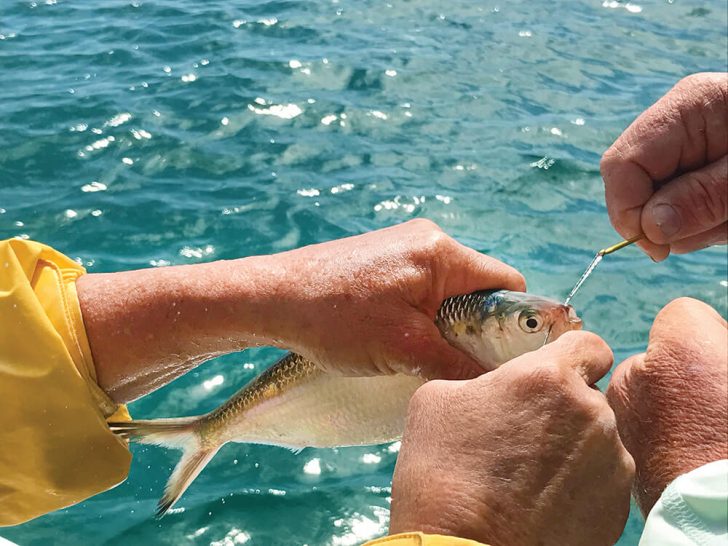For decades anglers have used an array of teasing techniques to attract fish. Bluewater anglers pull a variety of dredges, daisy chains and other fish attracting, commotion-creating devices to find fish. Others have been dragging hookless baits in order to coax a hot fish within casting distance for fly fishermen, and now nearshore anglers are discovering how effective these tactics can be.
In the past, inshore anglers might have thrown handfuls of stunned bait overboard in hopes of starting a feeding frenzy, a proven technique but not for all situations. Consider the need to cover a vast amount of water to find roaming fish or fishing an area that is already full of bait. This method could be less successful than a simple bait and switch.
Arguably, if you are a live bait fisherman or just looking to catch fish yourself, you would not go hookless. But perhaps you are trying to get someone their first fish on their own or trying to locate fish for fly fishermen. In these cases, the art of the tease is key. There are two basic techniques, one uses live bait, the other artificial. Both are effective and fun for both the teaser and angler.
When you need to cover mass amounts of water, slow trolling a live bait can be a great way to find fish. The rig is simple, a short loop of Dacron run though a bait’s nostrils and attached to a snap. Above the snap, a 4-foot piece of heavy mono is attached to a 3- to 4-inch float and then attached to a rod’s main line. The snap makes changing the teaser bait quick and easy, and the float helps keep track of the bait as well as giving the angler an easy-to-see target. The person working the teaser needs to be alert and ready for fast closing fish. The idea is to keep the bait just ahead of the predator and not allow an easy meal. Spinning and high-speed trolling reels work very well for this.
Using topwater plugs is also a great teaser. Striper guides employ this technique with great success to pull unseen fish to the surface and hot fish out of massive schools of bait. The technique is simple; use the topwater to create a commotion and bring feeding fish closer to the boat. Many guides remove the hooks. Others feel that bending them closed gives the lure better action with the additional weight. Work the teaser fast and loud to cover a lot of water in a short time. When a hungry fish appears, it’s a blast to try to keep the bait away while the angler makes a presentation.
Obviously, catching fish is the ultimate reason we hit the water, but teasing fish into a frenzy is a huge rush and tons of fun for both the teaser and the angler.
Will Robinson is a seasoned tournament angler and has been writing about fishing for nearly two decades.

